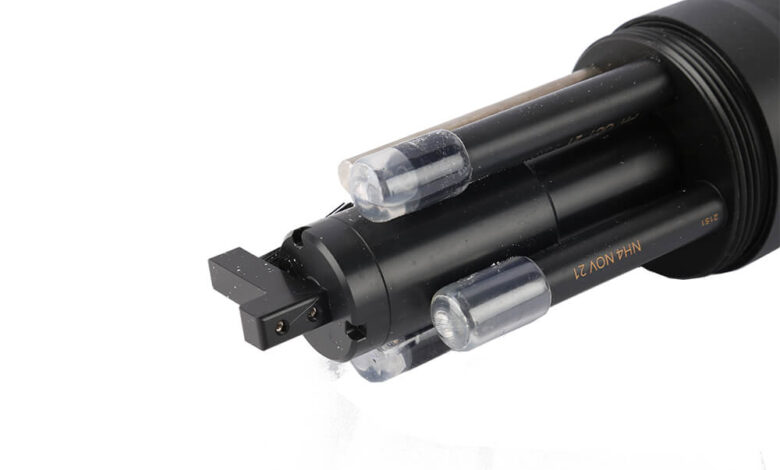How Ammonium Sensors Are Revolutionizing Water Quality Monitoring

As the world faces increasing challenges related to water pollution, the need for precise, real-time water quality monitoring has never been more critical. One of the primary pollutants in water bodies is ammonium (NH₄⁺), which can be harmful to both the environment and human health when present in excess. To combat this issue, Ammonium sensor have emerged as a vital tool in the monitoring and management of water quality. These sensors are transforming how we track and control pollutants in water, How Ammonium Sensors How Ammonium Sensors Are Revolutionizing Water Quality Monitoring enabling faster, more accurate, and more effective responses to contamination.
In this blog post, we will explore how ammonium sensors are revolutionizing water quality monitoring and how they are playing an essential role in maintaining the health of our water systems.
The Environmental Problem of Ammonium
Ammonium is a nitrogen compound that naturally occurs in the environment, primarily as part of the nitrogen cycle. It is an essential nutrient for plant growth, but when present in excessive amounts, ammonium becomes a pollutant. Ammonium is often introduced into water bodies through agricultural runoff, wastewater discharges, and industrial activities, creating a range of environmental issues:
-
Eutrophication: The excess nutrients, including ammonium, promote the growth of algae in water bodies. This process, known as eutrophication, depletes oxygen levels in the water, which can lead to “dead zones” where aquatic life cannot survive.
-
Toxicity to Aquatic Life: High concentrations of ammonium can be toxic to fish and other aquatic organisms, affecting their respiration and overall health.
-
Degradation of Water Quality: Elevated ammonium levels lead to poor water quality, which is problematic not only for ecosystems but also for human consumption and recreational activities.
These challenges underscore the importance of monitoring ammonium levels in water bodies to prevent harm to both the environment and human populations.
The Role of Ammonium Sensors in Water Quality Management
Ammonium sensors play a pivotal role in monitoring and controlling ammonium concentrations in water systems. By providing continuous, real-time data on ammonium levels, these sensors enable timely interventions and more efficient management of water resources. Let’s take a closer look at how ammonium sensors are revolutionizing water quality monitoring.
1. Real-Time, Continuous Monitoring
Traditional water quality monitoring techniques often involve periodic sampling and laboratory testing, which can result in delayed data. By the time the results are received, pollutants like ammonium may have already caused significant environmental damage. Ammonium sensors, on the other hand, provide real-time data on ammonium concentrations in water, enabling continuous monitoring and allowing for immediate action when ammonium levels rise above acceptable limits.
This real-time monitoring capability is especially important in wastewater treatment facilities, where ammonium sensors can track effluent quality before it is discharged into rivers or lakes. The ability to instantly measure ammonium levels ensures that necessary treatment adjustments can be made without delay, reducing the risk of water pollution.
2. Early Detection and Prevention of Pollution
One of the most powerful aspects of ammonium sensors is their ability to detect pollutants early. Excessive ammonium in water often signals the early stages of eutrophication, which can lead to harmful algal blooms. By identifying ammonium contamination early on, these sensors help prevent the full-scale impact of pollution, such as hypoxia or fish kills.
For example, ammonium sensors installed in rivers, lakes, or coastal areas can detect spikes in ammonium concentrations, signaling potential threats to aquatic life. Authorities can then take preventive measures, such as restricting nutrient inputs from agriculture or adjusting wastewater treatment processes to mitigate the problem.
3. Supporting Regulatory Compliance
Environmental regulations around water quality are becoming more stringent, particularly concerning nitrogen-based pollutants like ammonium. In many countries, industries, municipalities, and agricultural operations must meet specific thresholds for ammonium discharges to prevent contamination of local water sources.
Ammonium sensors play an essential role in helping these entities meet regulatory requirements. These sensors provide continuous monitoring data, enabling industries to track ammonium concentrations in real-time and ensure that they stay within permissible limits. By providing accurate and timely data, ammonium sensors help reduce the risk of non-compliance and the penalties that often accompany environmental violations.
4. Optimizing Agricultural Practices
Agriculture is one of the primary contributors to ammonium pollution through fertilizer runoff and the use of animal manure. Ammonium sensors can be utilized in agricultural settings to optimize fertilizer application, ensuring that the correct amounts of nutrients are used. By monitoring ammonium levels in irrigation water and runoff, farmers can adjust their practices to reduce nutrient loss and minimize contamination of nearby water bodies.
This data-driven approach to agriculture not only helps protect water quality but also leads to more sustainable farming practices. It reduces the environmental footprint of farming and allows for more efficient use of fertilizers, leading to cost savings for farmers.
5. Improving Water Treatment Efficiency
Water treatment plants rely on the efficient removal of contaminants like ammonium to ensure the quality of the water they release into the environment. Ammonium sensors are vital tools in these plants, as they allow operators to track ammonium levels and adjust treatment processes accordingly. For example, nitrification, a biological process that converts ammonium to nitrate, can be optimized based on real-time ammonium data.
By integrating ammonium sensors into treatment processes, plants can enhance their ability to meet discharge standards, reduce chemical usage, and optimize resource efficiency. This leads to better overall water quality, reduced environmental impact, and lower operational costs.
Types of Ammonium Sensors
Ammonium sensors come in various forms, and they rely on different technologies to measure ammonium concentrations in water. The two most common types are electrochemical sensors and optical sensors.
Electrochemical Sensors
Electrochemical sensors are widely used in water quality monitoring due to their affordability, sensitivity, and reliability. These sensors use electrodes to detect changes in electrical properties, such as voltage or current, when ammonium ions interact with the electrode surface. The resulting electrical signal is directly related to the ammonium concentration in the water, allowing for precise measurements.
Electrochemical sensors are particularly useful in industrial applications and large-scale water treatment facilities, where continuous monitoring of effluent is crucial for maintaining regulatory compliance.
Optical Sensors
Optical sensors use light to detect ammonium ions in water. These sensors work by emitting light through a water sample and measuring how the light is absorbed or scattered by the ammonium ions. The change in light absorption or scattering is then used to calculate the ammonium concentration.
Optical sensors are advantageous because they are non-invasive, require minimal maintenance, and provide real-time data. They are often used in environmental monitoring applications where sensors need to be deployed remotely or in difficult-to-access areas.
Applications of Ammonium Sensors
have a broad range of applications across industries and environmental sectors. Here are some key areas where are having a significant impact:
1. Wastewater Treatment
Ammonium sensors are essential in monitoring the ammonium content in wastewater effluent. By tracking ammonium levels in real-time, treatment plants can optimize the use of chemicals and adjust treatment processes to ensure that discharge standards are met.
2. Agriculture and Fertilizer Management
sensors help farmers monitor levels in irrigation water and runoff. This allows them to apply fertilizers more efficiently, reducing nutrient pollution and improving water conservation.
3. Environmental Conservation
Ammonium sensors are used by environmental agencies to monitor the health of aquatic ecosystems. By tracking ammonium concentrations in rivers, lakes, and coastal waters, these help identify areas at risk of pollution and enable timely intervention to protect aquatic life.
4. Industrial Applications
Industries that generate wastewater, such as food processing, chemicals, and petrochemicals, use ammonium sensors to monitor their effluent quality and ensure compliance with environmental regulations. These sensors provide real-time data that helps industries reduce their environmental impact and improve their waste management practices.
The Future of Ammonium Sensors
The future of looks promising, with advancements in technology driving innovation. As sensors become more sophisticated, they are likely to become smaller, more affordable, and even more accurate. The integration of with Internet of Things (IoT) technology will enable smart water management systems, where data is automatically transmitted to centralized platforms for analysis and decision-making.
Furthermore. The widespread adoption of ammonium sensors. Remote and underdeveloped areas. Will be crucial in ensuring global water security and environmental protection.
Conclusion
Ammonium sensors are transforming the way we monitor and manage water quality. Their ability to provide real-time. Continuous data on ammonium concentrations is revolutionizing water pollution management. From wastewater treatment to agricultural practices and environmental conservation. By enabling early detection of ammonium contamination, supporting regulatory compliance. And optimizing treatment processes, ammonium sensors play a critical role in protecting both aquatic ecosystems and public health. As technology continues to evolve, ammonium sensors. Will be at the forefront of creating a sustainable future. Water resources around the globe.



